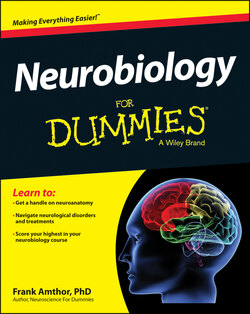Читать книгу Neurobiology For Dummies - Frank Amthor - Страница 39
Developing the brain and nervous system
ОглавлениеThe set of genes that define an organism is not a blueprint that is executed by a builder, but a set of procedures that brings about the development of the organism.
A useful metaphor is an ant hill or termite mound. No master ant or termite knows how to build a hill or mound and directs the other insects. Instead, ants and termites respond to each other, and to the environment, by digging holes and gluing arches together. Some holes and arches reach a critical mass that causes nearby insects to concentrate on those structures and related structures, which triggers the completion of the insect home as though its builders were following a design.
Developing cells have genetically coded responses to substances they detect by their membranes or ingest, including cell identity and brain location marker molecules. Cell responses include movement, division, and secretion of other markers and agents. The interactions among cells that have these responses in the embryological environment builds the brain.
Much of the genome is only expressed extensively during development, a time when the organism is also particularly susceptible to toxins that mimic or interfere with these markers and agents. The result of this interference is the construction of an improperly set-up brain, which is typically much worse than inferring temporarily with a properly constructed brain later in life, which often can be reversed.
